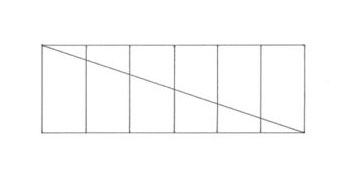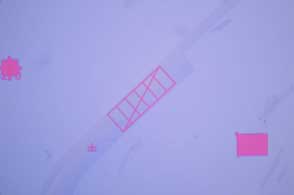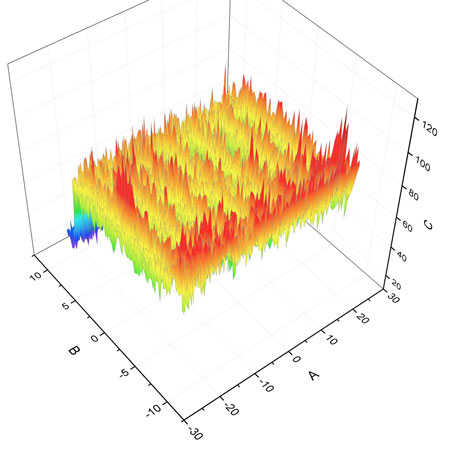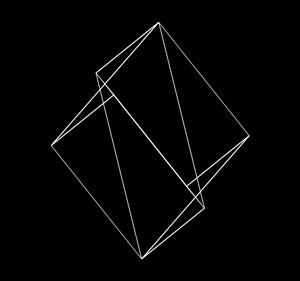| Aug 08, 2018 | |
Nobel art of science shines light on graphene(Nanowerk News) The Manchester-based Nobel laureate decorated for isolating 2D ‘wonder material’ graphene has collaborated on a fascinating video art project shedding light on its unique qualities and potential. |
|
| Nobel prize-winning physicist Sir Kostya Novoselov worked with artist Mary Griffiths to create Prospect Planes – a video artwork resulting from months of scientific and artistic research and experimentation using graphene. | |
| Prospect Planes will be unveiled as part of The Hexagon Experiment series of events at the Great Exhibition of the North 2018, Newcastle, on August 17. | |
| The six-part Hexagon Experiment series was inspired by the playful creativity of the Friday evening sessions that led to the isolation of graphene at The University of Manchester by Novoselov and Sir Andre Geim. | |
| Providing a fascinating insight into scientific research into graphene, Prospect Planes began with a graphite drawing by Griffiths, symbolising the chemical element carbon: | |
 |
|
| This was replicated in graphene by Sir Kostya Novoselov, creating a microscopic 2D graphene version of Griffiths’ drawing just one atom thick and invisible to the naked eye. | |
 |
|
| Griffiths and Novoselov used Raman spectroscopy to record a molecular fingerprint of the graphene image, using that fingerprint to map a digital visual representation of graphene’s unique qualities. | |
 |
|
| Prominent features within the topographic digital image produced using Raman spectroscopy were mapped by Griffiths to create an animated image which shifts between two and three dimensions, helping to raise awareness of the qualities which make graphene a transformational material. | |
 |
|
| A still of the animated image. | |
| Griffiths, who is also senior curator at The Whitworth art gallery, The University of Manchester, previously worked alongside Novoselov to produce other artworks relating to the graphene story. | |
| She said: “Having previously worked alongside Kostya on other projects, I was aware of his passion for art. This has been a tremendously exciting and rewarding project, which will help people to better understand the unique qualities of graphene, while bringing Manchester’s passion for collaboration and creativity across the arts, industry and science to life. | |
| “In many ways, the story of the scientific research which led to the creation of Prospect Planes is as exciting as the artwork itself. By taking my pencil drawing and patterning it in 2D with a single layer of graphene atoms, then creating an animated digital work of art from the graphene data, we hope to provoke further conversations about the nature of the first 2D material and the potential benefits and purposes of graphene.” | |
| Sir Kostya Novoselov said: “In this particular collaboration with Mary, we merged two existing concepts to develop a new platform, which can result in multiple art projects. I really hope that we will continue working together to develop this platform even further.” | |
| This year marks a step change in efforts to exploit and commercialise graphene and other 2D materials, unlocking new possibilities for product development through their durability, strength, low weight and ability to conduct electricity. | |
| The Hexagon Experiment series of events are taking place just a few months before the official launch of the £60m Graphene Engineering Innovation Centre, part of a major investment in 2D materials infrastructure across Manchester, cementing its reputation as Graphene City. | |
| Sheona Southern, Managing Director of Marketing Manchester, said: “Incorporating technical and scientific research into a newly commissioned piece of art will help to further awareness of Manchester’s vital role in the isolation, exploitation and commercialisation of graphene and other 2D materials. | |
| “The launch of the Graphene Engineering Innovation Centre this year will reinforce Manchester’s global reputation as the ‘Home of Graphene’ and art is just one of many mediums that is being used by the city to capitalise on the opportunities that presents. | |
| “Prospect Planes is an imaginative and thought-provoking project illustrating the many complementary factors that make Manchester a compelling place to live, work, visit and study.” | |
| Prospect Planes was commissioned by Brighter Sound. | |
| The Hexagon Experiment is part of Both Sides Now – a three-year initiative to support, inspire and showcase women in music across the North of England, supported through Arts Council England’s Ambition for Excellence fund. |
| Source: University of Manchester | |
|
Subscribe to a free copy of one of our daily Nanowerk Newsletter Email Digests with a compilation of all of the day's news. |
